At 4.18pm on November 7 last year, 30-year-old Lauren Hunt peered into the small, rumpled face of her newborn son, Bailey – a face that looked startlingly like her own – and marveled not only at her immense good fortune in having safely delivered a healthy baby via caesarean section, but also at life’s unexpected detours.
Bailey’s arrival was the culmination of a journey that had begun four years earlier with a life-redefining medical diagnosis. One night while she was out having dinner with her parents, Leanne and Dane, at a local pub in Victoria’s Knoxfield, Lauren had become aware of a strange and uncomfortable sensation in her left leg, which was casually wrapped around the leg of her chair. It felt hot and hurt a lot, as if she’d suffered a burn.
Then she started experiencing dizzy spells: “Any time my head was tilted or I bent over – emptying the dishwasher, for example – my brain would tingle and I’d get this awful rushing feeling up my spine which made me feel as if I was going to pass out.” The spasms became more frequent.
Lauren’s physiotherapist referred her to a neurologist, who ordered a battery of tests. An MRI revealed a lesion on her spine, while a follow-up lumbar puncture detected the presence of antibodies in her spinal fluid, and confirmed his worst suspicion.
He broke the news to Lauren, then 24, in the presence of Leanne, Dane and her sister, Erin, that she had multiple sclerosis (MS), a condition that they all knew to be a progressively debilitating neurodegenerative disease with no cure.
Any time my head was tilted I’d get a rushing feeling up my spine
“I was silent as we all walked back to the car to drive home – processing it, I suppose,” says Lauren. “And then I remember saying to Mum, ‘Well, that’s not what I was hoping for,’ before bursting into tears. I didn’t feel sad or scared: I was annoyed that MS had got me. I thought, surely I was too young and healthy to have something as awful as this? Wasn’t MS a disease that affected older people?” By the end of the 50-minute drive, though, she’d managed to compose herself. “This is what I’d been handed, I told myself: I had to find a positive way to deal with it.”
MS, which affects 25,600 Australians, is an autoimmune disease that attacks the body’s central nervous system. Mystery surrounds its precise causes, but experts believe it is triggered by a combination of genetic and environmental factors. The condition generates inflammation and scarring (or lesions) that interfere with nerve signals – with dire consequences for some of our most basic physical functions: seeing, walking and running – or even just standing upright.
Twenty years after diagnosis, 80 percent of patients with the commonest form of the disease – Relapsing Remitting MS – will progress to the more severe Secondary Progressive MS, which usually heralds a slow, steady decline towards disability and mobility aids.
With no cure in sight, it is a devastating diagnosis at any age. But for women who would ordinarily be focused on their relationship, career, having a baby or raising children, the timing couldn’t be more shattering.
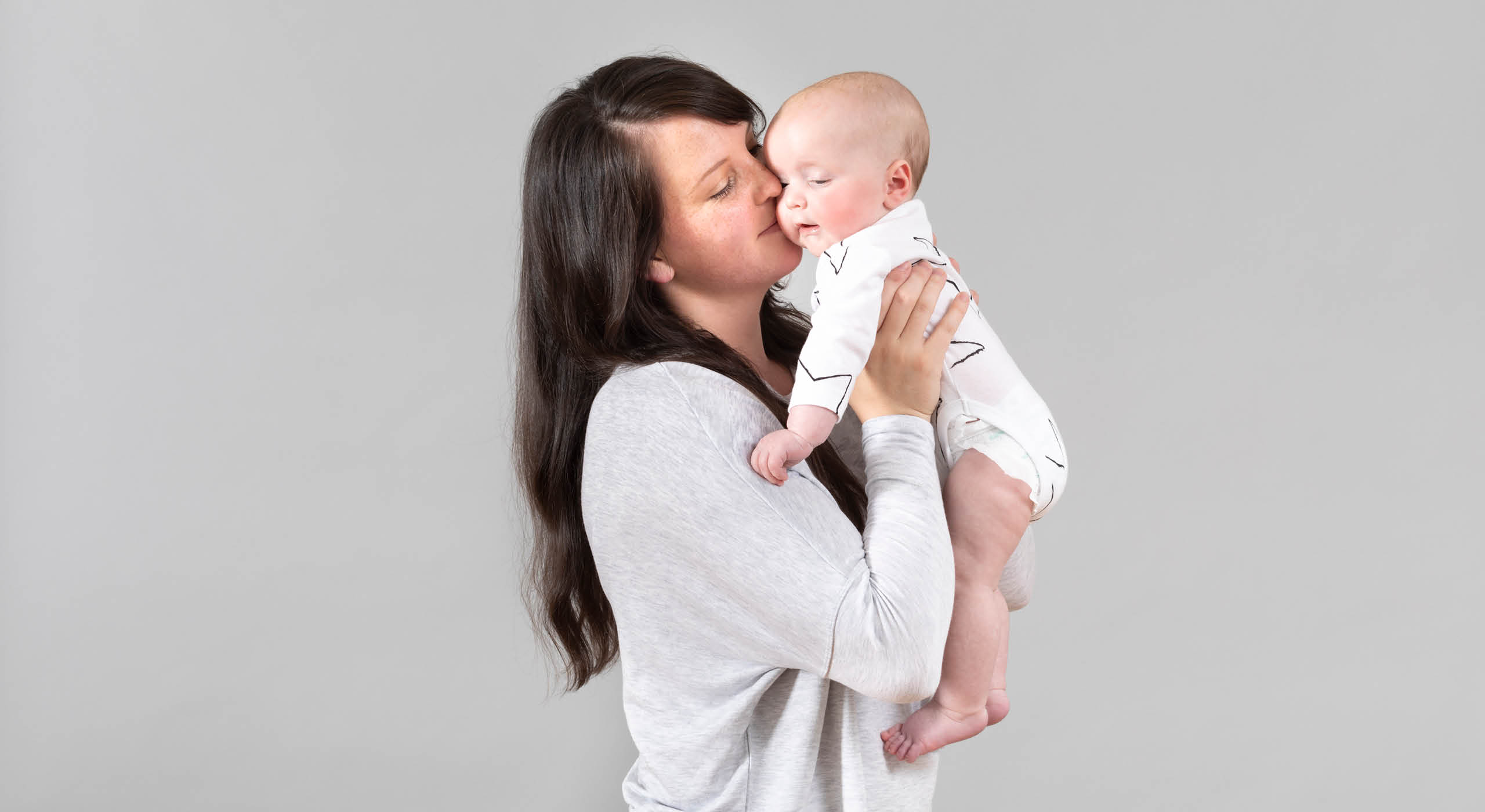

More women are suffering
Professor Jeannette Lechner-Scott, a neurologist at the Hunter Medical Research Institute in Newcastle, has access to startling local data stretching back more than half a century. It reveals that the number of Australians living with MS has multiplied by nearly seven times since the 1960s. Meanwhile, the “incidence [the number of new cases] was up 2.5 times in the 15 years between 1996 and 2011.”
But it is the yawning gender imbalance that has white coats in august neurological institutions around the world scratching their heads in bafflement. Fifty years ago, men and women were being diagnosed with Relapsing Remitting MS in equal numbers; now, it’s three women to every one man.
For Lauren, a diagnosis of MS brought her priorities into sharp relief. After her body rejected five consecutive therapies prescribed by her neurologist, she asked her doctor about children.
“At some point in 2017, as we were discussing the side effects of three new drugs, I asked, ‘Will I safely be able to have a baby in five years time?’” she says. “Some of the side effects he was outlining were pretty scary. I wanted to know whether there’d been any studies on the impact of these drugs on the female reproductive system. I told him I was worried about beginning a new drug that might do something to my body and in five years time, when I’m trying to have kids and nothing’s working, could it be from that?
“And he said, ‘There’s no way to be sure if any of these will have an effect on your ovaries: no studies have looked at that specifically. If children are something you want, perhaps you should think about doing it sooner rather than later’.
“It was all I’d ever wanted – ever since I was a kid in kinder and the teacher asked us all what we wanted to be when we grew up: I said, ‘A mum.’”
“It was all I’d ever wanted – ever since I was a kid in kinder and the teacher asked us all what we wanted to be when we grew up: I said, ‘A mum.’”
By the time she got home, Lauren’s mind was made up – and she wasn’t going to let not having a partner stand in her way: she would attempt to become pregnant via IVF using a sperm donor. Leanne, Dane and Erin signed up as her support team. “As soon as I mentioned it, they were all on board 100 per cent,” says Lauren. “Mum came to the counselling session with me and they asked her difficult questions, too: what would happen if I got sick and couldn’t care for the baby, for instance. She said, “We’ll manage. We’ve come through difficult situations in the past and this will be no different. We’re here no matter what.’”
On November 17, 2017, Lauren – then 28 – had her first appointment at Monash IVF; on March 1 last year, the team implanted a single embryo and two weeks later, a blood test confirmed – incredibly – that she was pregnant. “I couldn’t believe it had worked the first time,” she says. “It was phenomenal.”
Lauren is talking to me via an early-morning Skype call from her living-room in Forest Hill, Victoria. As her face fills my computer screen – pale, but pretty with large, wide-set eyes crowned by a top-knot of long, dark hair – she’s a picture of relaxed, happy new motherhood: “I’m living on coffee – and lots of it,” she jokes. A girlfriend, a member of her extensive support crew, is here looking after Bailey while we chat: just 11 weeks old, he coos and gurgles contentedly in the background.
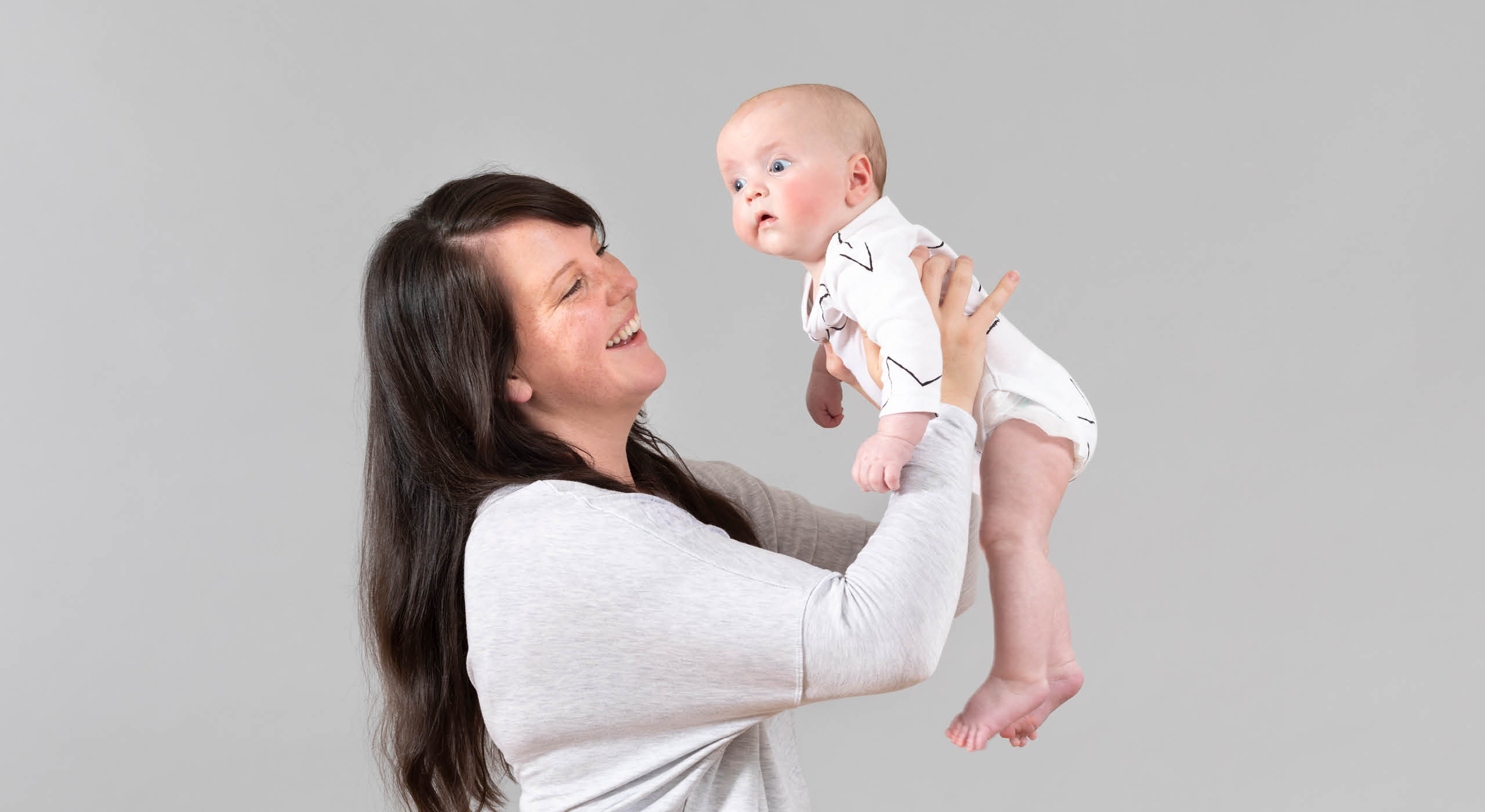

Why young women?
What’s behind the steady rise of MS among women? No one truly knows, although hormones undoubtedly come into the picture. “We know that a woman’s immune responses are more disposed than a man’s to be pro-inflammatory when responding to any kind of infection, trauma or vaccination,” offers Dr Lisa Melton, head of research at MS Research Australia.
However, pregnancy temporarily switches off this reaction to bring about a state of immune tolerance (so that a woman’s body doesn’t reject the foetus growing inside her). But with more of us having children later – or not at all – this protective response is never triggered, and those who are genetically susceptible remain more vulnerable to inflammatory conditions like MS.
“The data shows that, on average, if a woman has her first child early and then goes on to have more pregnancies,” confirms Melton, “she is less likely to develop MS than a woman who plans her first pregnancy late and has fewer children.”
Teenage weight again, which is more prevalent among girls than boys, is another risk factor, as is smoking. Traditionally, a country’s distance from the equator has been yet another factor: the sunnier the climate, the less MS you’d expect to find. This is because the epidermis manufactures Vitamin D in response to sunlight’s ultraviolet rays and Vitamin D, like pregnancy, offers protection.
Increasingly, though, two factors have started to undermine this influence: the deeply ingrained “Slip, slop, slap” message around sunscreen use and the change, over the past 50 years, in women’s employment status, which has meant more time spent indoors. Put simply, we’ve stopped getting enough sunlight.
The deeply ingrained ‘Slip, slop, slap’ message around sunscreen use… means we’ve stopped getting enough sunlight
Fortunately, there are ways to manage MS symptoms. Medical doctors, such as Dr Terry Wahls (the University of Iowa) and Professor George Jelinek (the University of Melbourne), and Canadian film-maker Matt Embry are all well and active decades after their own diagnoses of MS, an outcome they attribute to dramatically rethinking the way they eat, exercise and manage stress. All of them live medication-free.
Confronting a difficult truth
Sydney jewellery designer Pip Keane, 44, is a petite, smiling brunette and mother to three young children. A year ago, she noticed a persistent blurriness in her right eye. She was having trouble seeing the television at night and then, at a barbecue one afternoon, she found she couldn’t focus on the person sitting opposite her on the picnic rug.
Later that day – her eye now worryingly painful and one half of her face numb and hot – she was admitted to hospital for a three-day course of intravenous steroids. The team told her she had optic neuritis – inflammation of the optic nerve – a condition that often signals the onset of MS.
Pip couldn’t believe what she was hearing. “I said something like, ‘Oh, don’t be silly: just give me some drops.’ But the doctor explained that without the steroids [to dampen down the inflammation], there was a risk of serious permanent damage to my eye.”
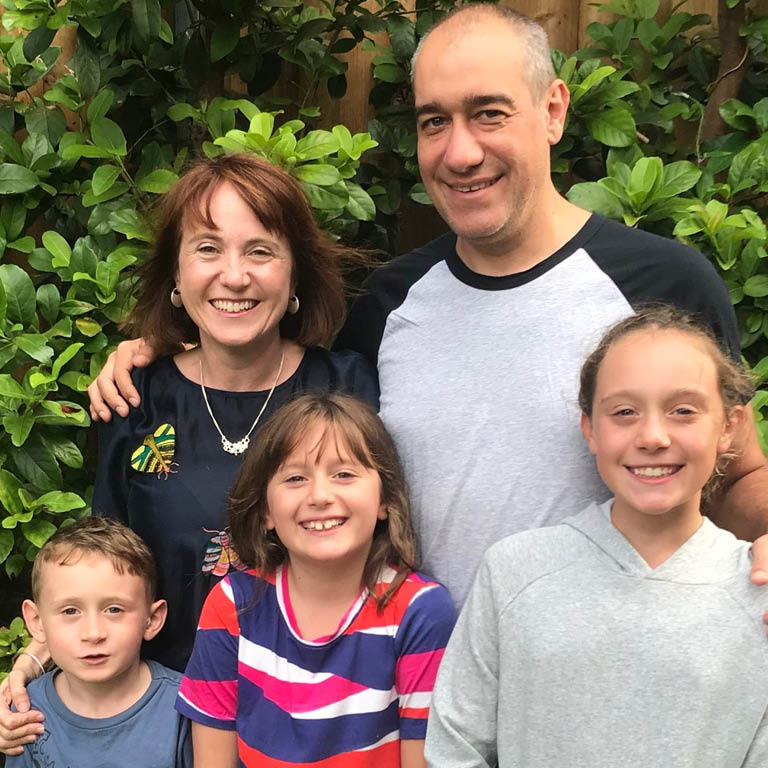

A few weeks later, her left leg started to feel odd: “It wasn’t numb exactly, but some days it felt as if it were bandaged really, really tightly and others, it was all pins and needles.” She laughs suddenly remembering her denial: “I just assumed I had a pinched nerve!”
In fact, it was an MS relapse. An MRI found lesions on Pip’s brain and a follow-up lumbar puncture finally forced her and her husband, Tim, to confront a difficult truth.
But Pip, like Lauren, refuses to be defined by MS. Last November, ignoring crushing fatigue (another symptom), she completed the 58-kilometre Gong Ride for MS with Tim at her side. She walks, does Pilates and follows the Professor Jelinek’s Overcoming MS Recovery Program.
“Of course I have worries,” she says. “Will the next house we buy have to be single-storey because I can’t manage stairs anymore? I want to be actively involved in the children’s lives as much as possible and they’re pretty energetic: will I always be able to keep up with them? And of course I’m concerned about the genetic component of MS: hopefully, this will never happen to them but, if it does, perhaps they’ll be able to adopt the same changes I’ve made and find a way forward for themselves. Taking control of diet and exercise is really empowering.”
Six months into her treatment, Pip’s latest MRI shows no new lesions.
The celebrity spotlight
In October last year, American actor Selma Blair, 46, announced on Instagram that she had MS (“I fall sometimes. I drop things. My memory is foggy.”) She’d only recently been diagnosed, but thought she’d been living with symptoms for a long time.
This week Blair made her first red-carpet appearance since her diagnosis at the Vanity Fair Oscars after-party. Wearing a diaphanous Grecian-style dress by Australian designers Ralph & Russo and leaning heavily on a black cane, Blair looked regal as she posed for photographers. At one point, as the emotional actress, who was clearly struggling to walk, wiped tears from her eyes, the press pack paused shooting to applaud her courage.
In 2016, fellow actor Jamie-Lynn Sigler – Meadow in The Sopranos – also “came out”. She’d been diagnosed at 20 but had kept it a secret for 15 years, worried that if she went public she wouldn’t be offered work.
This is a common theme among those with MS, and the question of whether or not to tell an employer is very individual, depending on severity of symptoms, the requirements of the job and the culture and adaptability of the workplace.
Lechner-Scott advises consulting the Employment Support Services team, which includes a lawyer, at MS Australia. “There has been an explosion of new therapies in MS and, increasingly, we’re seeing less disability and unemployment for people living with the condition,” she adds. “In 20 to 30 years time, patients who are being diagnosed now won’t be in wheelchairs. We’re getting better and better at keeping the lid on this disease.”
Lauren knows a thing or two about the speed with which future plans can change. She’s currently planning a christening – a year ago, she wasn’t even pregnant – and starts a new treatment in a day or so. (In the year that she’s been meds-free, she has developed two more small lesions on her brain.)
“I certainly never imagined this was how my life was going to go,” she says cheerfully. “I was headed for the stock-standard route – a partner, marriage, kids – but ended up having to take a sharp detour. The funny thing is, I wouldn’t change a thing.”
Still, having MS is fatiguing – as is being a new mum and a single, working parent to boot (Lauren has already resumed her job as an office manager working three days a week). I ask her how she manages difficult days. “I couldn’t do any of this without help,” she says. “When Bailey was born, I stayed with Mum and Dad for six weeks, which was a game-changer. I was only able to breastfeed him for two weeks as I had to start getting ready for treatment, but the silver lining there has been that other people can feed him while I rest. As well as the family, I have so many close girlfriends who are there for us – literally! – 24/seven. The support is constant. Honestly, Bailey and I are set for life!”




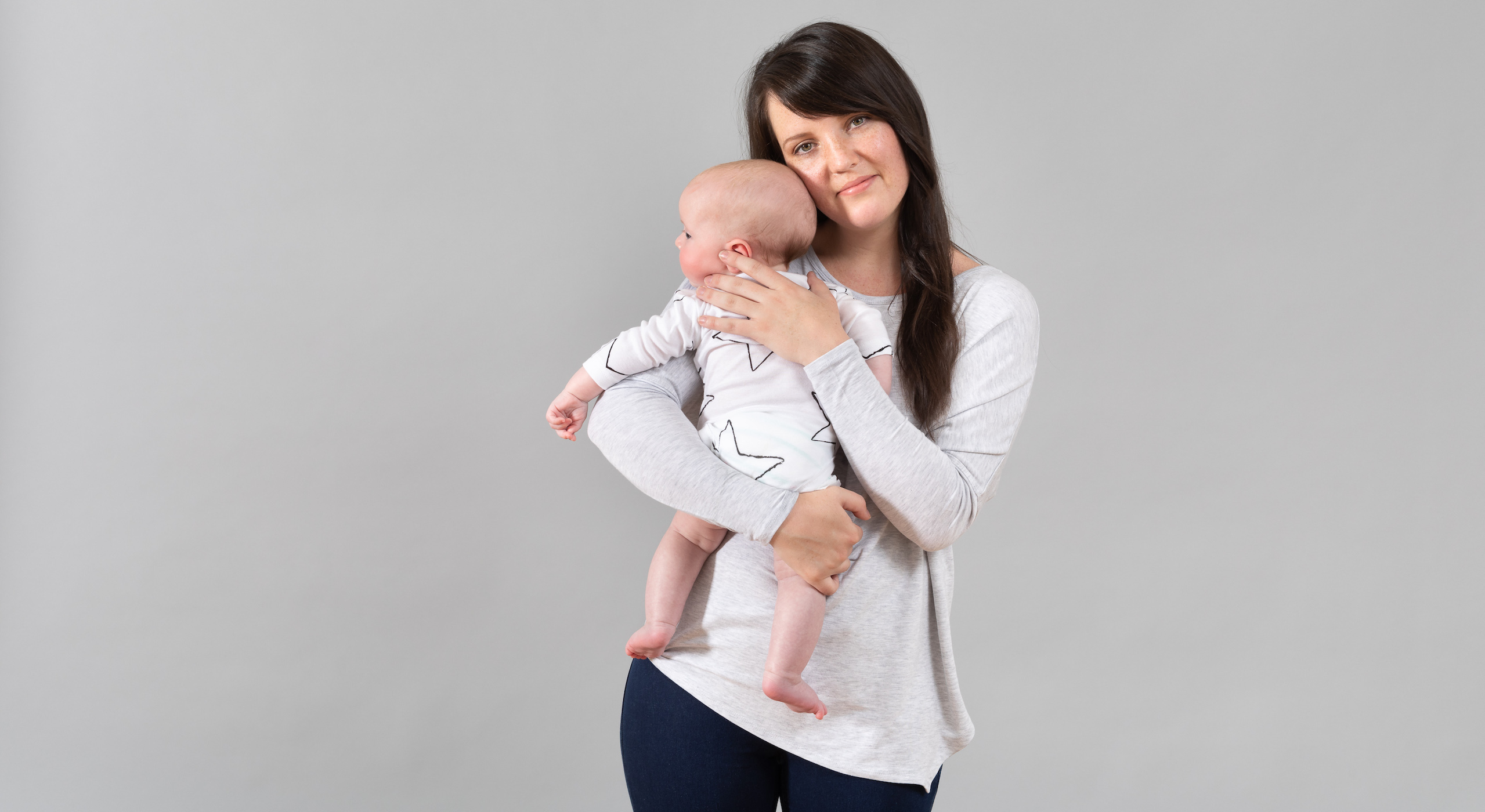
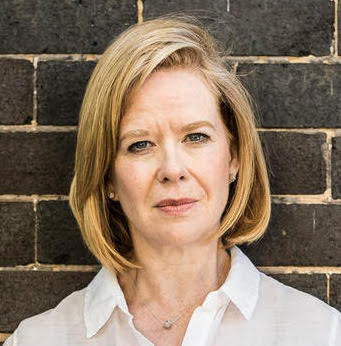



10 Comments